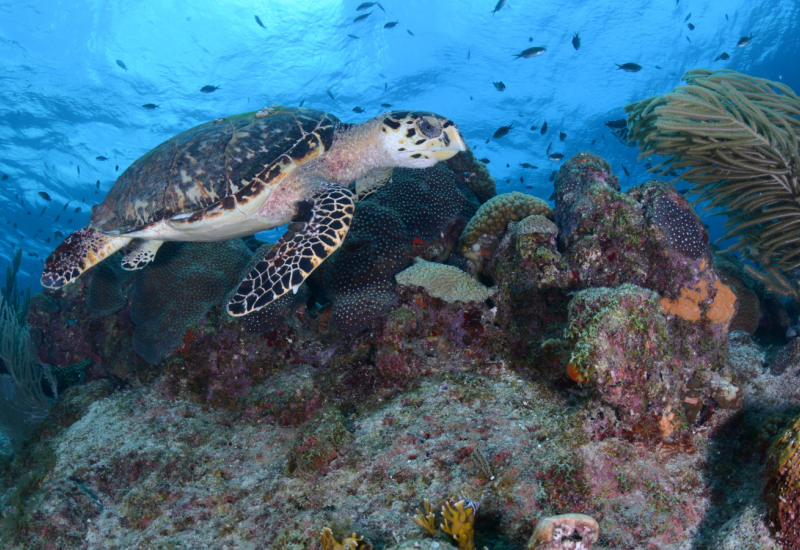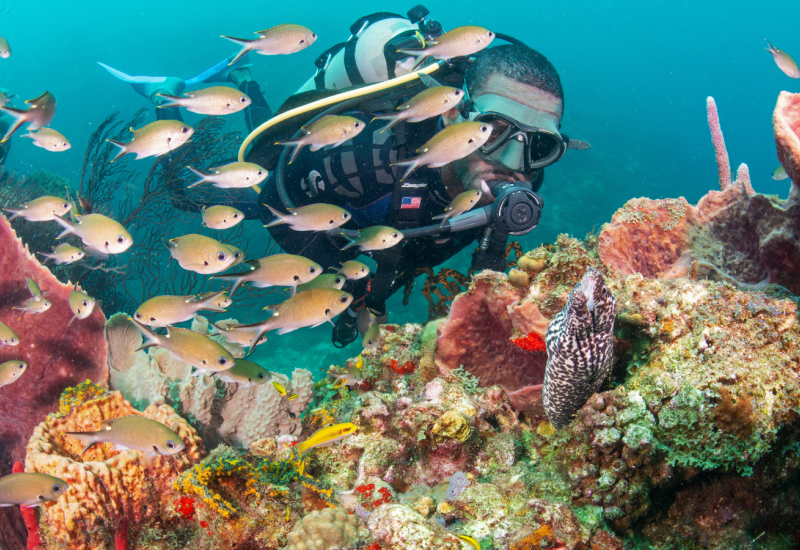Ice Diving with Beluga Whales in Russia's White Sea
The plows try to clean as much of the roads as possible, a fight lost before it is begun. A thick eiderdown of snow covers everything, muffling sound. Our driver has already driven several hours to join us in Finland, and now must take to the white way once again.
We slowly set off, anxious to reach our destination before the advancing darkness of the afternoon makes our journey to the small Russian village of Nilma Guba, near Kandalaksha Bay, even more difficult.
During the previous few hundred years, technology has allowed us to become visitors to regions of Earth where we do not belong. Since the Soviet Union dissolved, the Russian region of Karelia is slowly opening to a limited number of foreign tourists. But this magical, frozen land demands adaptation to its extremes. The White Sea is distant not only as a destination, but in every sense, difficult even to imagine. The lands around the Arctic Circle are locations without visible boundaries, in territories where mass tourism is still unknown — and likely will remain so. With the onset of winter, ice gradually covers the whole area, mixing land and sea into a unique, white-iced expanse until spring.
At the beginning of March, land temperatures are still far below freezing. When gales sweep these desert moors, temperatures quickly drop to minus-22 degrees F. A 5-foot-thick layer of ice floats on the salt water, moving up and down with tidal waves and underwater currents — the frozen platform is anything but static. Tides rise and fall more than 3 feet, so ice at the shore continually cracks, refreezes and cracks again. The constant friction sculpts the underwater side of the ice blocks into mesmerizing shapes; all around the cliff face, they bubble like a sponge.
Every dive is carefully prepared by the skillful local operator, Arctic Circle Dive Centre, chosen by Waterproof Expeditions. Nothing is improvised; everything is planned and methodically performed. The choice of dive sites is limited by the experience of the divers, the strength of the ice pack, and the tide and currents that can easily move the ice platform.
Constant contact will be maintained with the surface via a line held by the “tenders” — by far the most important guys in the whole operation. If the diving seems challenging, think with pity of the men who must withstand air temperatures some 20 degrees below that of the dive environment, and who share responsibility for diver safety no matter what foolish thing a diver might decide to do under the ice.
After a site is selected, a mobile diving camp is set up, formed of heated wooden cabins on sledges — fitted with everything a diver could need — and a larger heated common-room module for lunch and socializing. Each module, even the bathroom, is on a sledge. Every day we climb onto a sort of snow train: hand-built wooden sleigh boxes full of gear and people, pulled by snowmobiles across the ice floe and up over hills to neighboring bays.
Reaching the underwater world at last is an experience itself. At the beginning of the ice-diving season — from late February to mid April — well-defined mainas, or ice holes, are cut into the ice platform. Due to the low temperatures, they must be dug again for every dive because marine water rises through the holes, forms puddles and quickly freezes. In just one night, a thick layer of ice bars these passages; every day tenders must hack through again with large handsaws.
Mainas are fascinating: They are portals between the white frozen land and the mysterious, dark marine environment. Divers must cross these thresholds to discover an underwater world where they cannot freely swim. For safety reasons, a rope connects each diver with his buddy, and both with the tender at the mouth of the hole. A series of signals is performed with the ropes, providing a constant umbilical cord.
Finally we drop slowly into a melt of fresh and salt water. At about 28 degrees F, there’s a surprising amount of life in these shallow, nearshore waters.
The White Sea is more or less a southern extension of the Barents Sea, and the underwater flora and fauna are similar. The White Sea hosts fewer species overall because of lower salinity due to fresh water from numerous rivers and snow, but it boasts a peculiar mix of temperate and arctic species. During summer months, it can be visited by occasional orca whales and Greenland sharks, and regularly by beluga whales and seals.
Close to the coast and the islets, the underwater floors are pocked with slits and leaks, ravines and crevices created by the erosion of masses of ice against the rocks surrounding the basin. These hideouts are perfect for anemones, sponges, algae, sea stars, sea urchins, bright soft-coral colonies, shellfish, nudibranchs, hydroids and actiniae. Airy, diaphanous jellyfish float midwater, while strange Stauromedusae (Haliclystus auricula) stalk the low-growing kelp. Among the undulating fronds of these slippery plants, there are ethereal ophiuras-like fairy critters, firmly attached with their long legs. Cracks host crabs, shrimp and sleeping fish, such as the strange wolffish (Anarhichas lupus). Flat-bottom plains are covered by forests of kelp, nurseries for fish and critters.
The best scenery is above our heads: Rays of sunlight stream and stretch as if through a kaleidoscope of imposing ice sculptures. Everything is surrounded by a green-yellow light that changes shade and brightness based on the amount of snow covering the ice floe.
Eventually we have to come out of the water. Until they’ve tried it, no one believes how difficult it is to walk a few steps in an icy, melting camp, dressed in bulky undergarments and drysuit, carrying heavy scuba gear. But the challenge is mental rather than physical. Those who can meet that challenge will find an ice-diving trip to the White Sea one of the most memorable experiences any diver could hope for.
What it Takes
Diving in an overhead environment requires special training. White Sea diving employs single cylinders equipped with a dual-outlet valve, so you will need a separate first stage for your octo. Each regulator should have its own gauge; it’s good practice to have your BC inflator attached to one regulator, and your drysuit inflator to the other. A drysuit with an ice hood and dry gloves is essential. For more information about White Sea requirements and conditions, go to scubadiving.com/whitesea.
Need to Know

Getting There: International flights are to Helsinki, Finland; then take Finnair to Kuusamo, followed by an eight-hour transfer by car across the Finnish/Russian border to Kandalaksha Bay. You also can travel by train from Moscow or St. Petersburg to Chupa, a 27-hour journey, followed by a two-hour transfer by car to Kandalaksha.
Operator: Waterproof Expeditions — [email protected]; waterproofexpeditions.com — is a Netherlands-based global tour operator that works with local operators selected by Waterproof.
When to Go: Late February (darker, colder) to mid-April (more light, less cold, but more difficult because of ice melt) is optimal for ice diving. The mean temperature in February is 5 degrees F, and may fall lower than minus-15 degrees F. At times, warm air from the Atlantic Ocean raises the air temperature to 42 degrees F.
Dive Conditions: Water temps are about 28 degrees F. Visibility is generally poor, averaging 15 to 20 feet, and can drop lower.
Shooting in Ice-Cold Water
1. Get close: Get as close as you can, and use the brightest lens you have. Being close to your subject limits the amount of water between it and your lens, reducing the amount of suspended particles lit up by your strobes.
2. Shoot with natural light: Push the ISO as high as is tolerable so you can lower the power of your strobe and avoid lighting up those particles — challenging in these green waters.
3. Position your strobe: The farther the light source is from your lens, the fewer particles you will illuminate. Longer strobe arms with strobes positioned away and to the sides of your lens will give you the best results.
Compact-camera users who utilize the built-in camera flash often suffer from serious backscatter issues. If you must use your internal strobe, try using a diffuser, which will soften the light and reduce the backscatter.

Want the Complete Package?
Franco Banfi uses a Canon EOS-1Ds Mark II, a Canon EF15mm f/2.8 fisheye lens, sturdy aluminum housing with superdome and special O-rings appropriate for very low temperatures, plus two powerful strobes.

Franco BanfiFor advanced divers, diving the untouched waters of Russia's White Sea provides the ultimate challenge.
The plows try to clean as much of the roads as possible, a fight lost before it is begun. A thick eiderdown of snow covers everything, muffling sound. Our driver has already driven several hours to join us in Finland, and now must take to the white way once again.

Franco BanfiDivers prepare to enter Russia's White Sea through mainas, or holes in the ice.
We slowly set off, anxious to reach our destination before the advancing darkness of the afternoon makes our journey to the small Russian village of Nilma Guba, near Kandalaksha Bay, even more difficult.
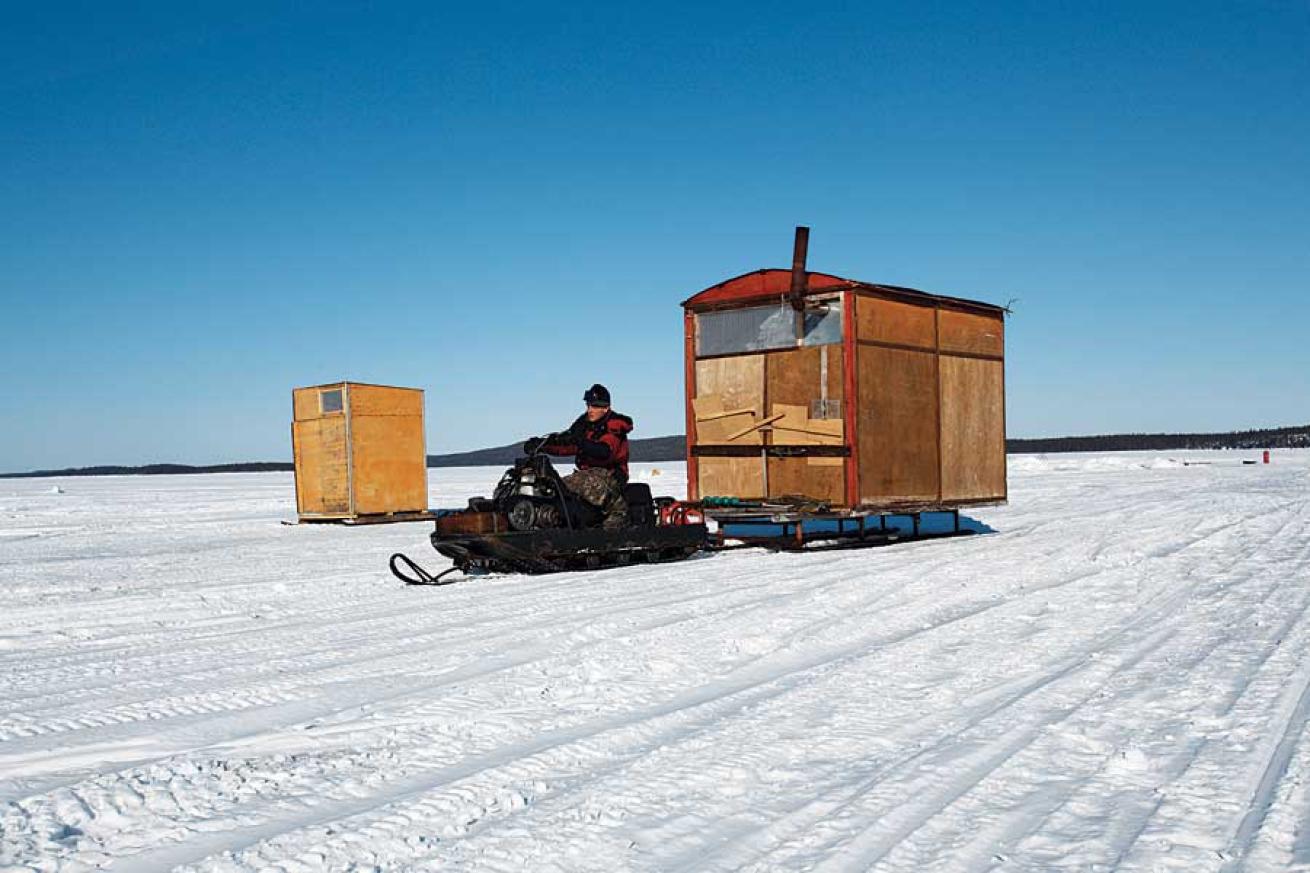
Franco BanfiHeated wooden cabins on sledges serve as mobile camps for divers, and they are equippied with everything you need for the adventure.
During the previous few hundred years, technology has allowed us to become visitors to regions of Earth where we do not belong. Since the Soviet Union dissolved, the Russian region of Karelia is slowly opening to a limited number of foreign tourists. But this magical, frozen land demands adaptation to its extremes. The White Sea is distant not only as a destination, but in every sense, difficult even to imagine. The lands around the Arctic Circle are locations without visible boundaries, in territories where mass tourism is still unknown — and likely will remain so. With the onset of winter, ice gradually covers the whole area, mixing land and sea into a unique, white-iced expanse until spring.
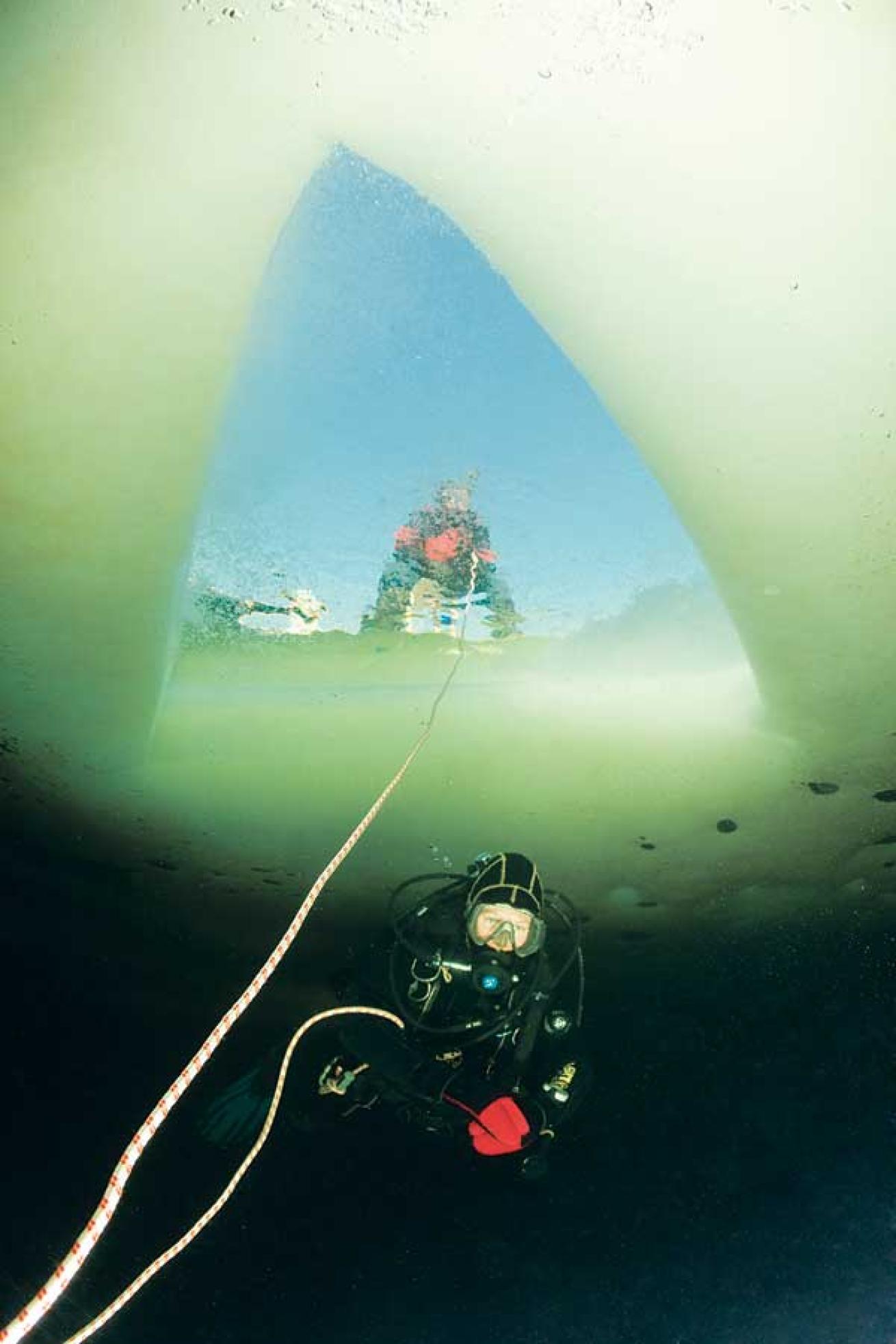
Franco BanfiMainas, or ice holes, are cut into the ice platform before every dive.
At the beginning of March, land temperatures are still far below freezing. When gales sweep these desert moors, temperatures quickly drop to minus-22 degrees F. A 5-foot-thick layer of ice floats on the salt water, moving up and down with tidal waves and underwater currents — the frozen platform is anything but static. Tides rise and fall more than 3 feet, so ice at the shore continually cracks, refreezes and cracks again. The constant friction sculpts the underwater side of the ice blocks into mesmerizing shapes; all around the cliff face, they bubble like a sponge.
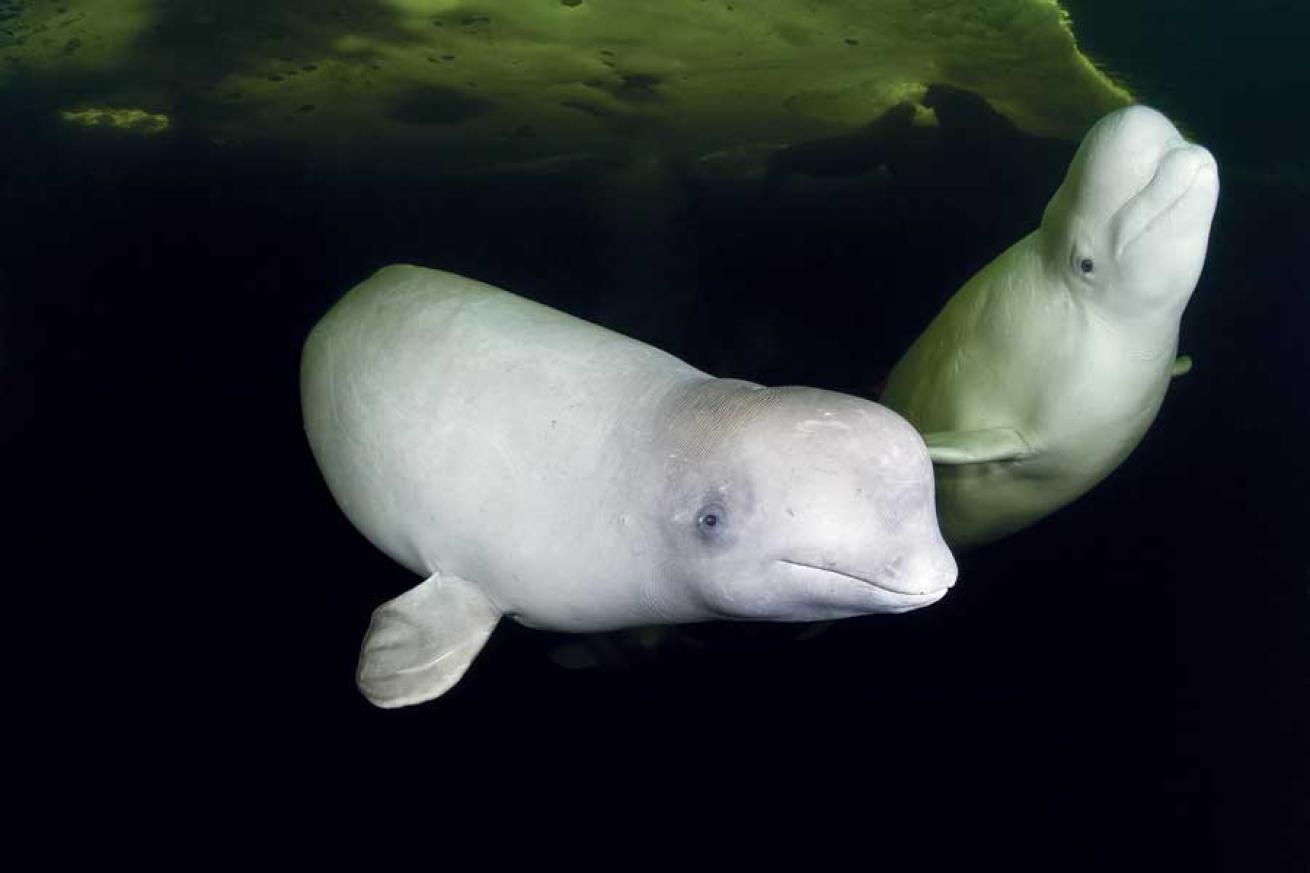
Franco BanfiBeluga whales are highly social and perhaps the most vocal of all whales; they are sometimes called sea canaries.
Every dive is carefully prepared by the skillful local operator, Arctic Circle Dive Centre, chosen by Waterproof Expeditions. Nothing is improvised; everything is planned and methodically performed. The choice of dive sites is limited by the experience of the divers, the strength of the ice pack, and the tide and currents that can easily move the ice platform.
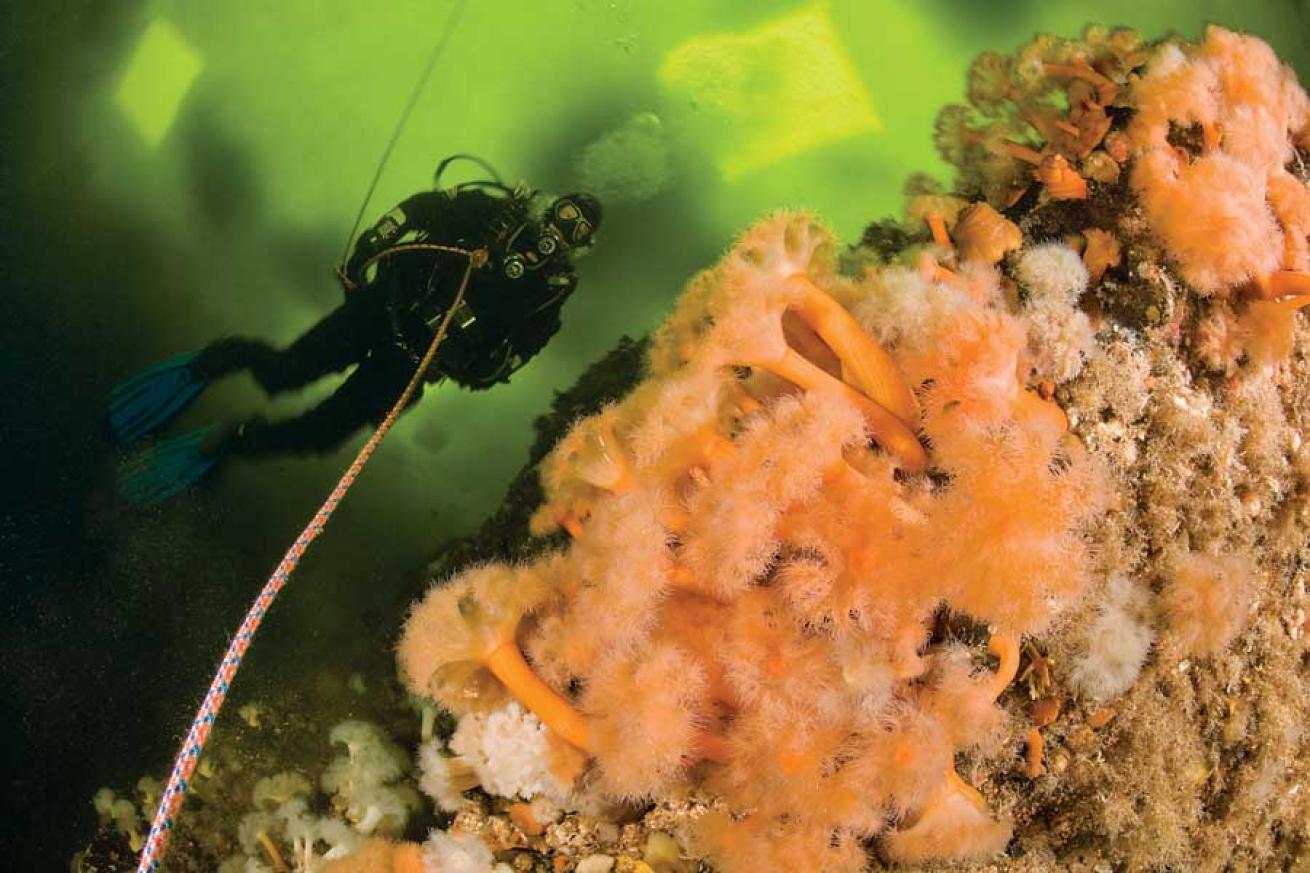
Franco BanfiThe arctic substrate is covered with anemones and worms that somehow survive here.
Constant contact will be maintained with the surface via a line held by the “tenders” — by far the most important guys in the whole operation. If the diving seems challenging, think with pity of the men who must withstand air temperatures some 20 degrees below that of the dive environment, and who share responsibility for diver safety no matter what foolish thing a diver might decide to do under the ice.
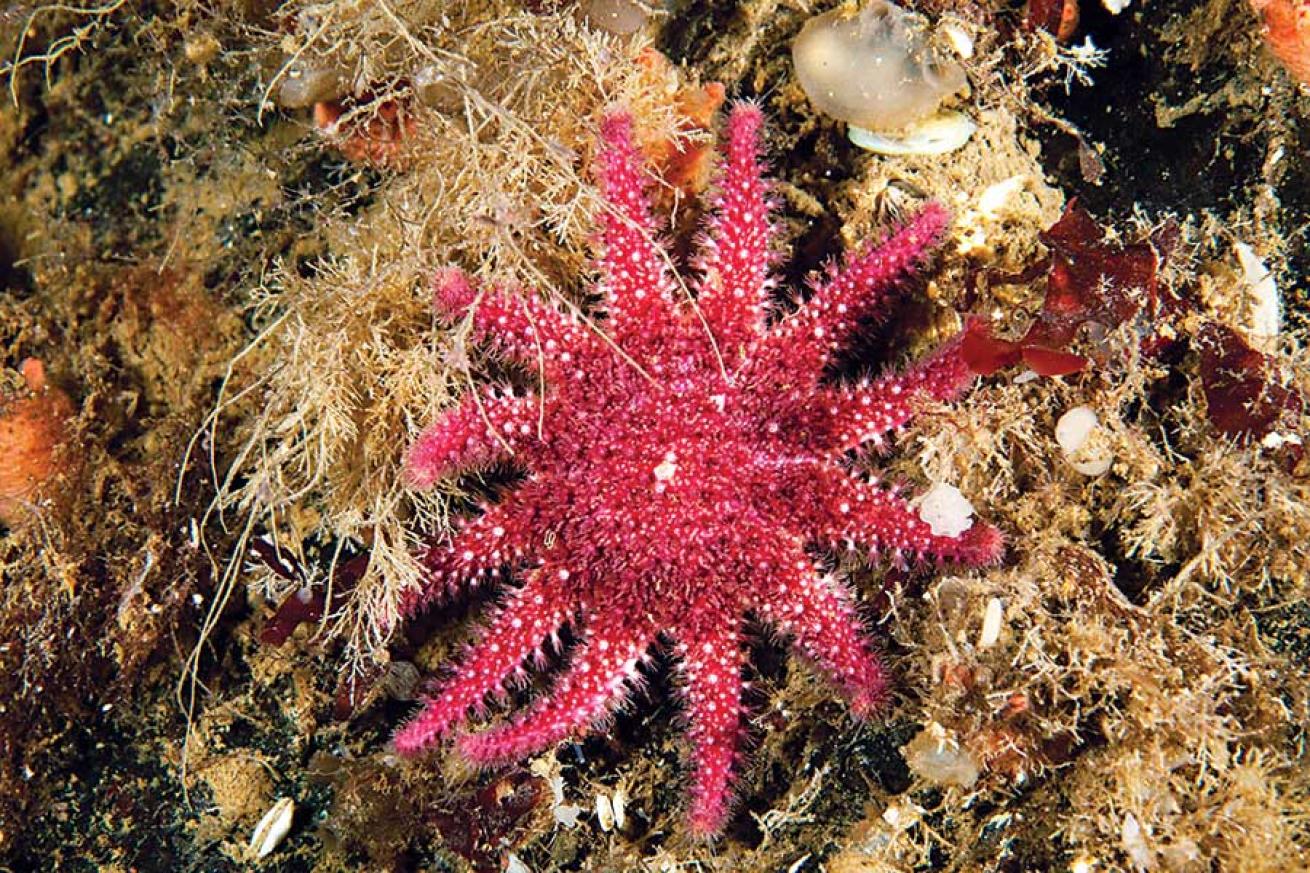
Franco BanfiThe spiny sunstar is commonly found in Russia's White Sea.
After a site is selected, a mobile diving camp is set up, formed of heated wooden cabins on sledges — fitted with everything a diver could need — and a larger heated common-room module for lunch and socializing. Each module, even the bathroom, is on a sledge. Every day we climb onto a sort of snow train: hand-built wooden sleigh boxes full of gear and people, pulled by snowmobiles across the ice floe and up over hills to neighboring bays.
Reaching the underwater world at last is an experience itself. At the beginning of the ice-diving season — from late February to mid April — well-defined mainas, or ice holes, are cut into the ice platform. Due to the low temperatures, they must be dug again for every dive because marine water rises through the holes, forms puddles and quickly freezes. In just one night, a thick layer of ice bars these passages; every day tenders must hack through again with large handsaws.
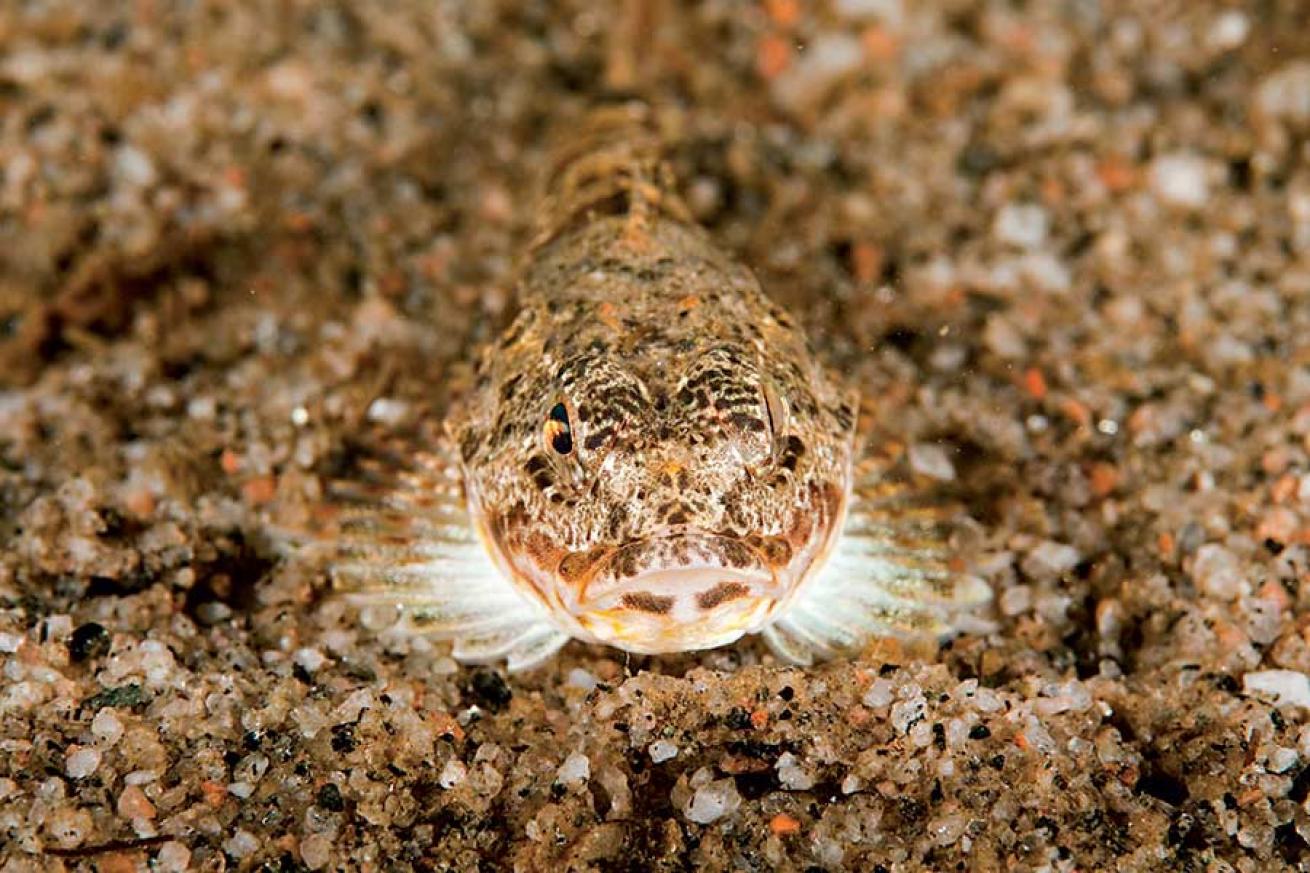
Franco BanfiFish in Russia's White Sea blend in or take cover under cracks to hide from predators.
Mainas are fascinating: They are portals between the white frozen land and the mysterious, dark marine environment. Divers must cross these thresholds to discover an underwater world where they cannot freely swim. For safety reasons, a rope connects each diver with his buddy, and both with the tender at the mouth of the hole. A series of signals is performed with the ropes, providing a constant umbilical cord.
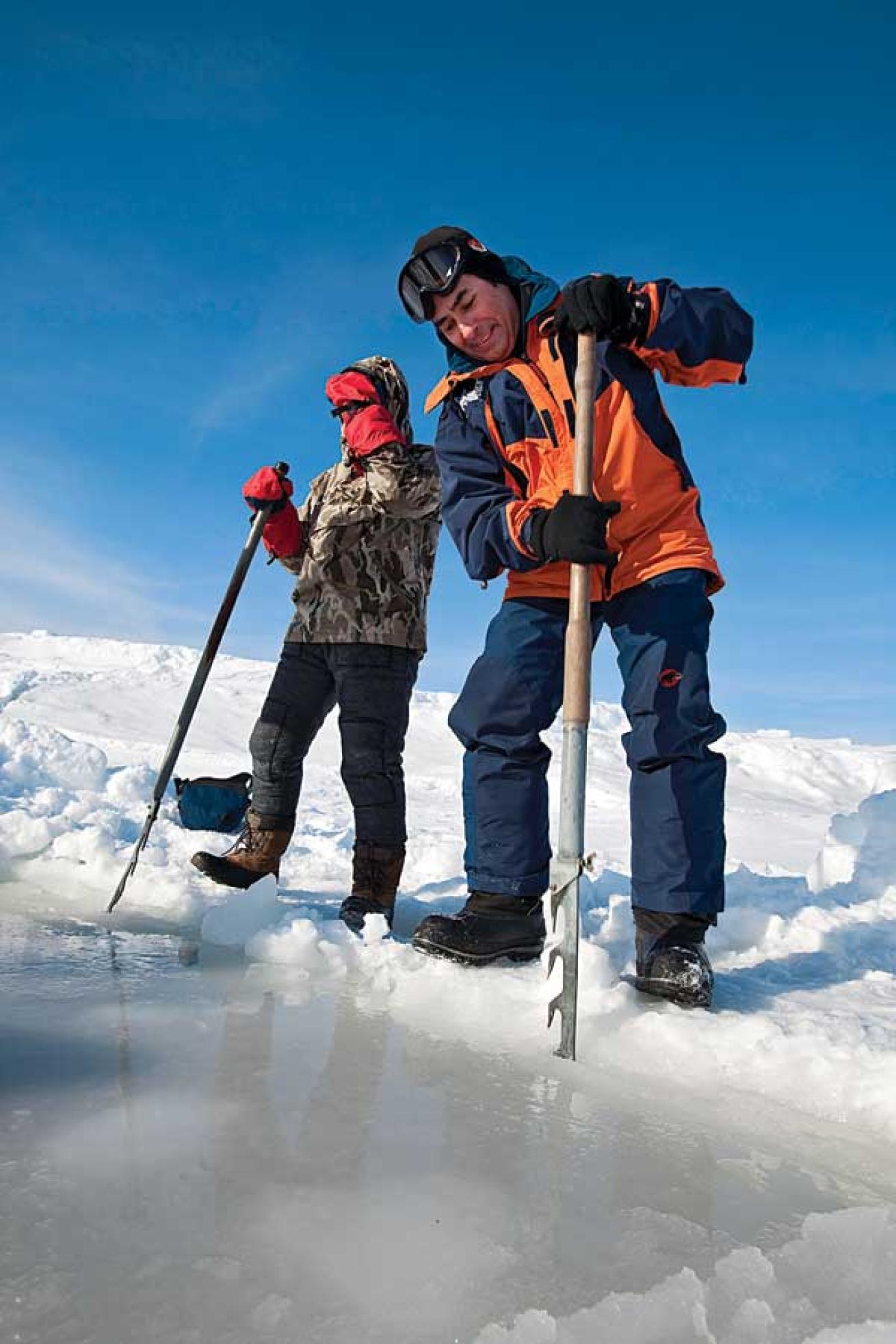
Franco BanfiTenders — by far the most important people in the operation — maintain constant contact with divers through a line they hold above water.
Finally we drop slowly into a melt of fresh and salt water. At about 28 degrees F, there’s a surprising amount of life in these shallow, nearshore waters.
The White Sea is more or less a southern extension of the Barents Sea, and the underwater flora and fauna are similar. The White Sea hosts fewer species overall because of lower salinity due to fresh water from numerous rivers and snow, but it boasts a peculiar mix of temperate and arctic species. During summer months, it can be visited by occasional orca whales and Greenland sharks, and regularly by beluga whales and seals.

Franco BanfiAmong the animals in Russia's White Sea, crabs and fish find cover to escape predators.
Close to the coast and the islets, the underwater floors are pocked with slits and leaks, ravines and crevices created by the erosion of masses of ice against the rocks surrounding the basin. These hideouts are perfect for anemones, sponges, algae, sea stars, sea urchins, bright soft-coral colonies, shellfish, nudibranchs, hydroids and actiniae. Airy, diaphanous jellyfish float midwater, while strange Stauromedusae (Haliclystus auricula) stalk the low-growing kelp. Among the undulating fronds of these slippery plants, there are ethereal ophiuras-like fairy critters, firmly attached with their long legs. Cracks host crabs, shrimp and sleeping fish, such as the strange wolffish (Anarhichas lupus). Flat-bottom plains are covered by forests of kelp, nurseries for fish and critters.
The best scenery is above our heads: Rays of sunlight stream and stretch as if through a kaleidoscope of imposing ice sculptures. Everything is surrounded by a green-yellow light that changes shade and brightness based on the amount of snow covering the ice floe.
Eventually we have to come out of the water. Until they’ve tried it, no one believes how difficult it is to walk a few steps in an icy, melting camp, dressed in bulky undergarments and drysuit, carrying heavy scuba gear. But the challenge is mental rather than physical. Those who can meet that challenge will find an ice-diving trip to the White Sea one of the most memorable experiences any diver could hope for.
What it Takes
Diving in an overhead environment requires special training. White Sea diving employs single cylinders equipped with a dual-outlet valve, so you will need a separate first stage for your octo. Each regulator should have its own gauge; it’s good practice to have your BC inflator attached to one regulator, and your drysuit inflator to the other. A drysuit with an ice hood and dry gloves is essential. For more information about White Sea requirements and conditions, go to scubadiving.com/whitesea.
Need to Know
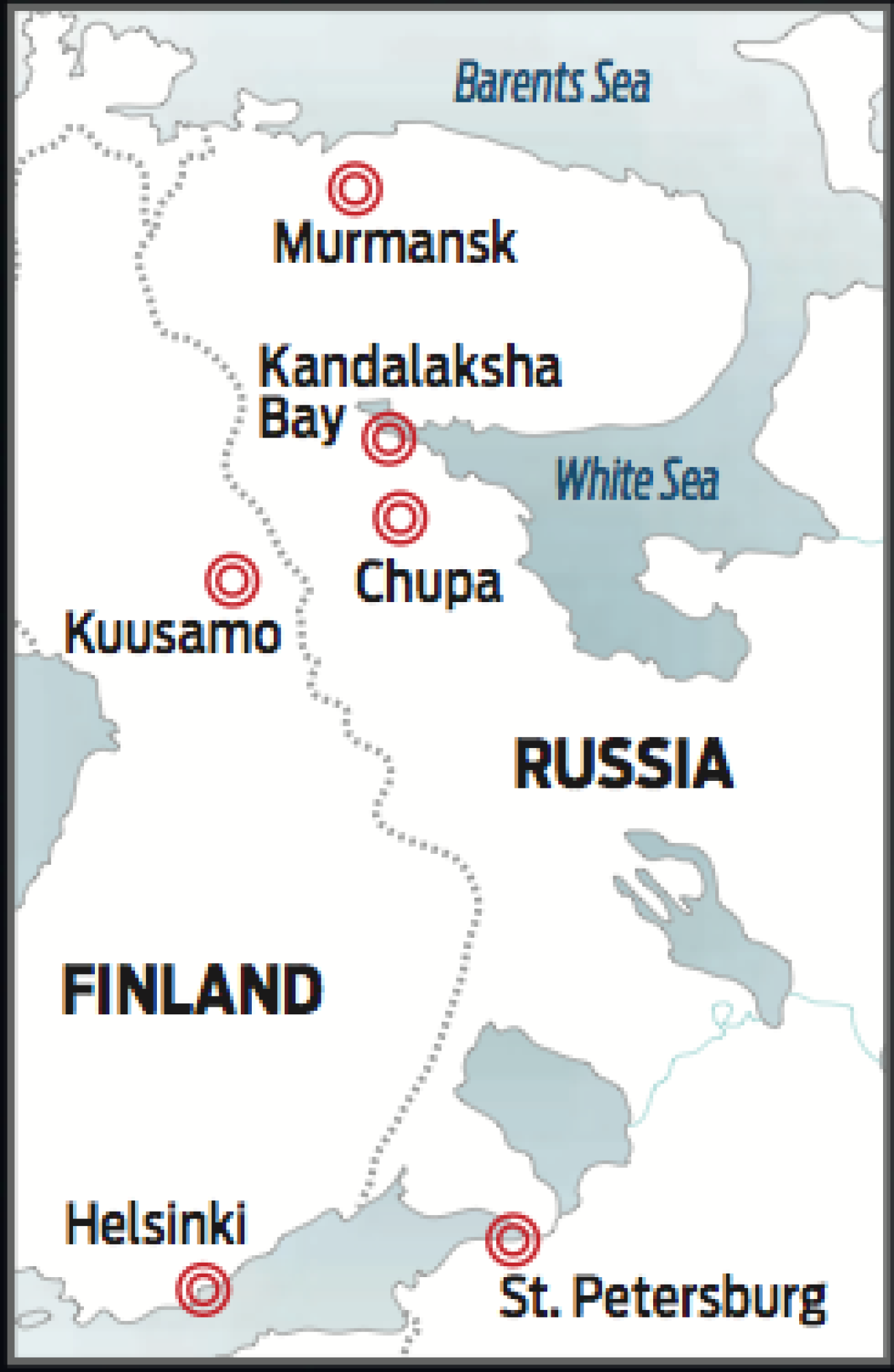
Getting There: International flights are to Helsinki, Finland; then take Finnair to Kuusamo, followed by an eight-hour transfer by car across the Finnish/Russian border to Kandalaksha Bay. You also can travel by train from Moscow or St. Petersburg to Chupa, a 27-hour journey, followed by a two-hour transfer by car to Kandalaksha.
Operator: Waterproof Expeditions — [email protected]; waterproofexpeditions.com — is a Netherlands-based global tour operator that works with local operators selected by Waterproof.
When to Go: Late February (darker, colder) to mid-April (more light, less cold, but more difficult because of ice melt) is optimal for ice diving. The mean temperature in February is 5 degrees F, and may fall lower than minus-15 degrees F. At times, warm air from the Atlantic Ocean raises the air temperature to 42 degrees F.
Dive Conditions: Water temps are about 28 degrees F. Visibility is generally poor, averaging 15 to 20 feet, and can drop lower.
Shooting in Ice-Cold Water
1. Get close: Get as close as you can, and use the brightest lens you have. Being close to your subject limits the amount of water between it and your lens, reducing the amount of suspended particles lit up by your strobes.
2. Shoot with natural light: Push the ISO as high as is tolerable so you can lower the power of your strobe and avoid lighting up those particles — challenging in these green waters.
3. Position your strobe: The farther the light source is from your lens, the fewer particles you will illuminate. Longer strobe arms with strobes positioned away and to the sides of your lens will give you the best results.
Compact-camera users who utilize the built-in camera flash often suffer from serious backscatter issues. If you must use your internal strobe, try using a diffuser, which will soften the light and reduce the backscatter.
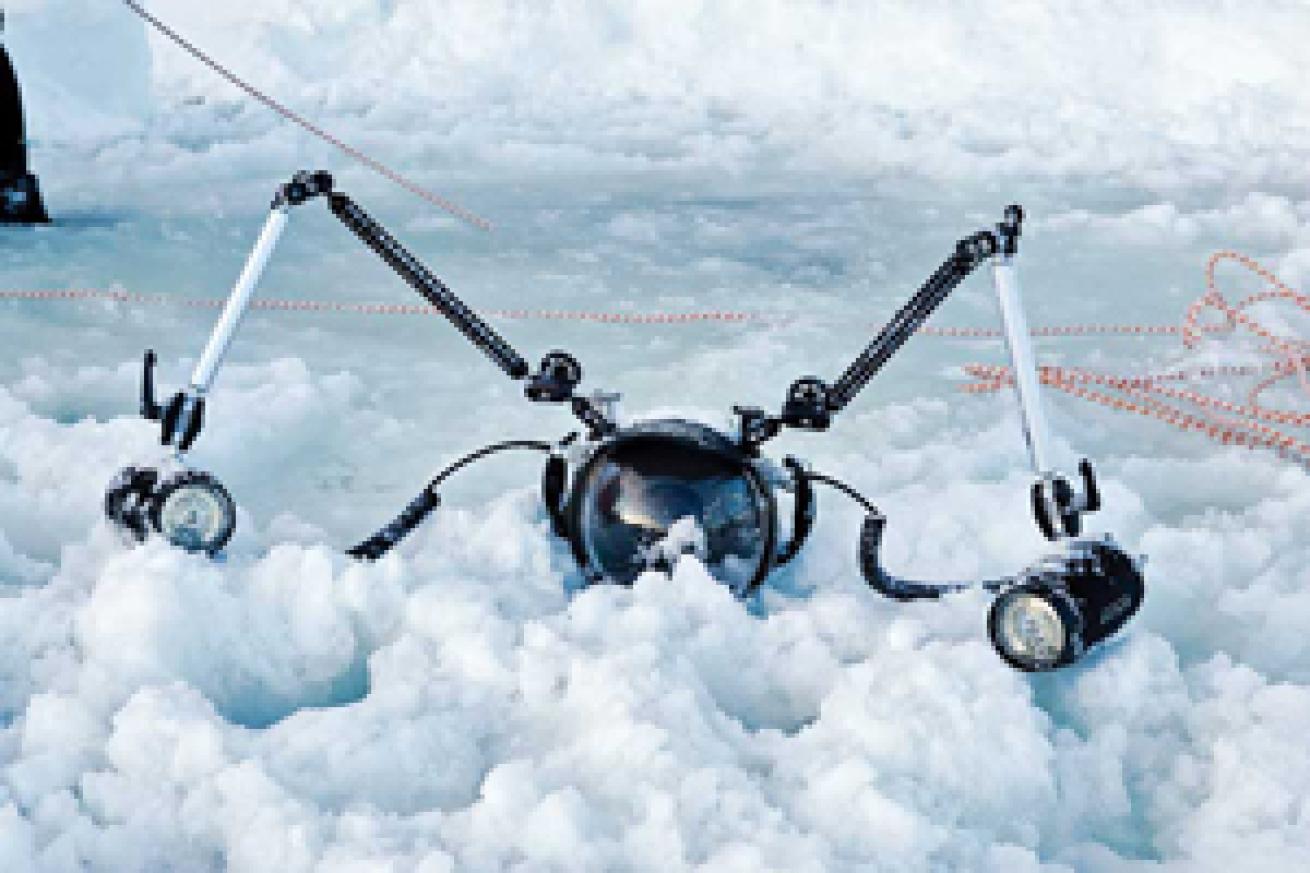
Want the Complete Package?
Franco Banfi uses a Canon EOS-1Ds Mark II, a Canon EF15mm f/2.8 fisheye lens, sturdy aluminum housing with superdome and special O-rings appropriate for very low temperatures, plus two powerful strobes.


